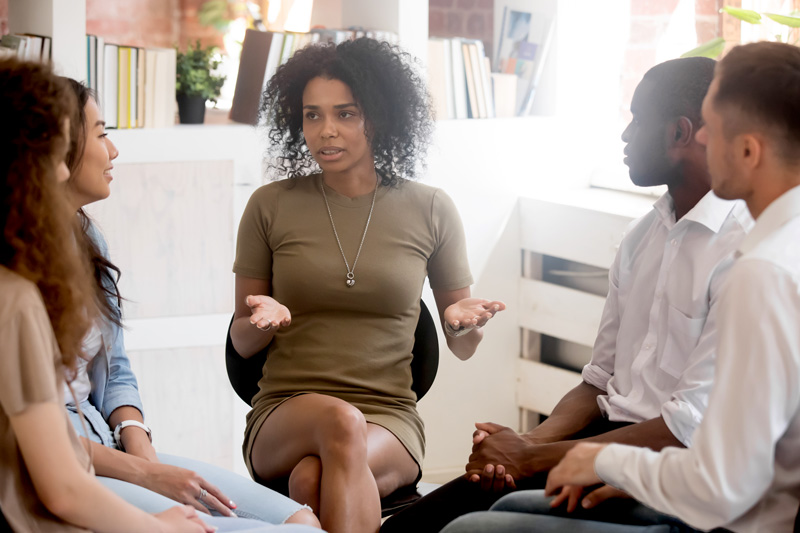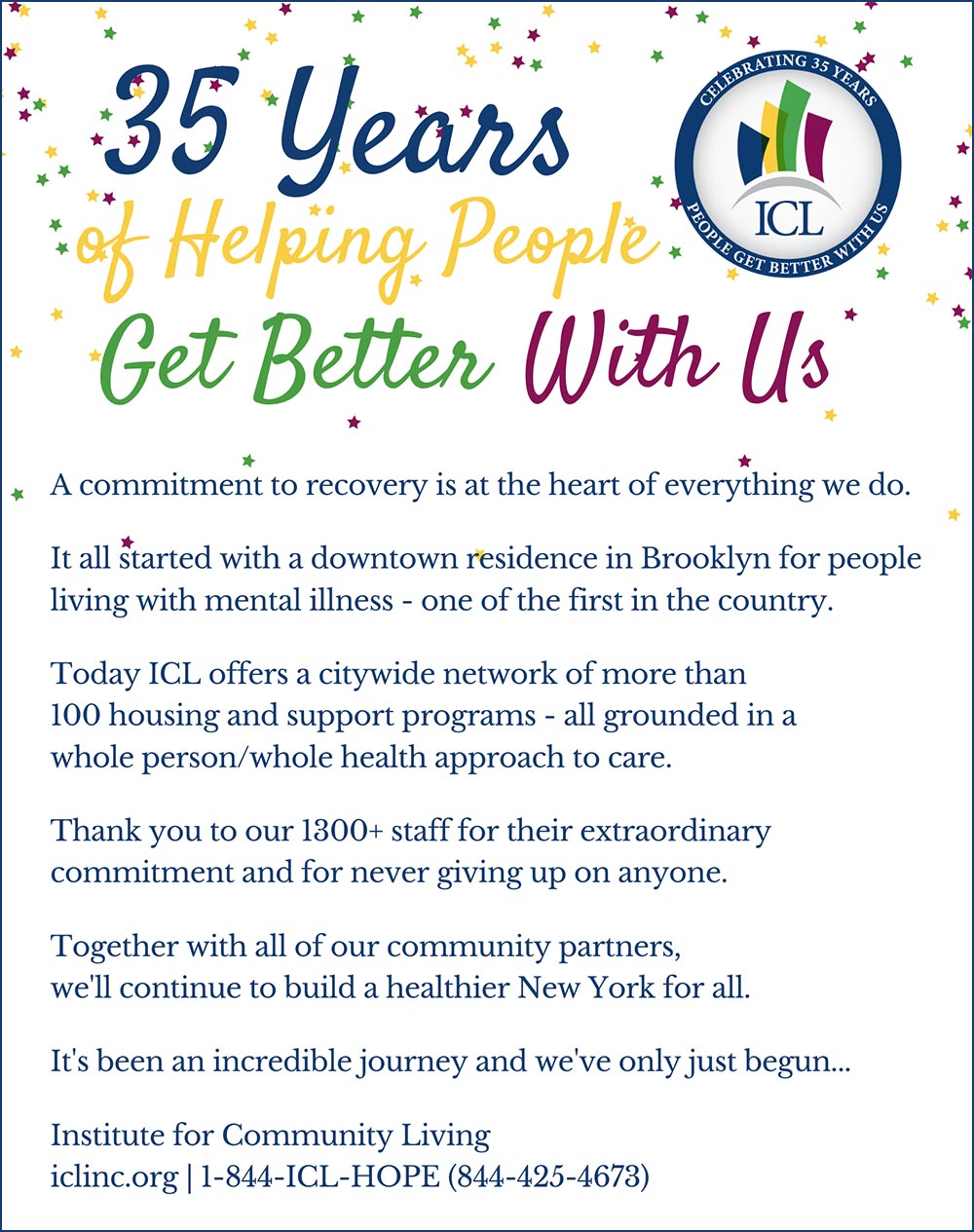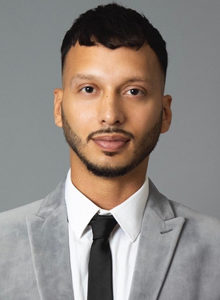Defining recovery is all-encompassing. It may be recovery from mental illness, substance use, trauma, losses and, as we’ve recently learned, from the effects of a pandemic. Most often it is thought about as a journey toward regaining something that was lost or returning to a former state. In behavioral health, we take the definition a step further: Recovery is about helping a person realize a vision of themselves they did not think possible and derives from the belief that everyone is capable of living their best life even if circumstances or history make it difficult for a person to believe. That is why at its very core, recovery is about hope.

Here are some basic assumptions about the process of recovery: We know that there is no one recovery: Each person’s journey will look – and feel – very different. For some, the slightest gains allow them to feel better and feel like themselves again. For others, it may take much more work and time to get to that place.
Recovery as Common Thread
While I worked in a variety of settings earlier in my career, it has been in my almost ten years at the Institute for Community Living (ICL) that I have come to appreciate a much broader and holistic understanding of recovery.
I’ve been part of nearly every area of services at ICL (and there are many, with more than 100 distinct programs across the five boroughs). Through this work, I have come to a much greater understanding of the complexity of recovery thanks to being part of a community of people working together to ensure that, as our mission states, “people get better with us.”
At ICL, recovery is integral to every program; whether at Community Residences, Supported Housing, Assertive Community Treatment (ACT) Teams, Intensive Mobile Treatment Teams or Mental Health Clinics. While each program may look different on the surface, they share the goal of improving a person’s well-being, enhancing their safety and bringing them closer to a more satisfying and fulfilling life. All of these goals are encompassed in a program’s particular approach to recovery tailored to specific life experiences, ages, and health status.
Recovery is even spelled out in the central principles that guide the work we do throughout ICL It’s part of what we commonly refer to as TRIP – an acronym for treatment that is Trauma-Informed, Recovery-Oriented, Integrated, and Person-Centered.
Linking Physical and Mental Health
What has further enhanced ICL’s appreciation for recovery are the two latter parts of that acronym: Integrated and Person-Centered care.
ICL serves about 15,000 people every year including people of all ages facing problems related to mental illness and substance use; many of their challenges are the result of larger social and economic conditions that have plagued communities of color for generations – conditions like poverty, chronic homelessness, and lack of access to quality, reliable health care.
Incorporating the effects of these social determinants of health into our work has further enhanced how we look at recovery. What we’ve come to appreciate at ICL, along with other mental health practitioners and institutions around the country, is that recovery is only successful if it is grounded in an understanding of and respect for the entire life experience of a person. Referred to as whole person/whole health (or integrated) care, whatever it’s called, we know that this approach needs to be part of any recovery process.
At ICL, whole person health is the lens through which we look at every individual who comes to us for help. And each person is an active participant – that’s why we do biannual healthy living surveys to make sure that what we are doing is working. Since this survey was instituted about seven years ago, each year about 97% of people receiving mental health services tell us they are feeling and doing better and are more connected to community. These are key markers of success on the recovery journey.
Use What Works
What modality works best in recovery? When asked what practice models inform my work – one-on-one, group or community – my answer is always the same: I am a social worker and take from different models what has the most promise and meets the needs of the individual (family, group, or community).
Let’s say I’m working with a 20-year old young adult transitioning out of foster care into an ICL Community Residence and being served by an ACT team. My decision about a modality will be led by the person, their specific situation and circumstance. For example, I might use a Strengths-Based language approach to introduce myself, have small talk to help make the individual feel more at ease. Like a good social worker, I may throw in a couple of ice breakers that are age appropriate and, hopefully, “cool” enough.
Once they are feeling more comfortable, I might use evidenced-based practices such as Motivational Interviewing to determine what parts of their life they’re prepared to make changes in. At that point, I might engage in Person-Centered Planning and partner with them to develop goals and objectives and possible interventions. I would do this carefully as this might be the first time the person feels they are in the driver’s seat, on their road to recovery.
If there’s an event the person wants to heal from but isn’t quite ready to face, we can tap into Narrative Therapy and call the event something that’s less triggering. I might also pull from Cognitive Behavioral Therapy and assign worksheets to help them better understand the impact of their thoughts and how to restructure unhealthy patterns of thinking. And in the end, I might leave them with a transitional object (Object Relations Theory) to remember our relationship when they might need a tangible reminder.
A resource I’ve found very useful in developing strategies to support recovery is SAMHSA’s Recovery Model’s ten guiding principles that include culture, relational, holistic, hope and peer support. These principles were created to bridge mental health and substance use disorders, providing more treatment options.
Culture is one we often take for granted: We’ve learned a lot about the impact of culture in recent years as the conversation about race has come more to the surface. We have to continually assess the interaction of culture and treatment delivery. When we’re being conscious of the role of cultural identity in a person’s life, we’re conveying much-needed respect. Relationship is another principle I hone in on as it can significantly help the person tap into their own motivation and create change. In other words, your relationship with them can be the impetus for change.
Access a Variety of Services
Regardless of what model you’re utilizing, to serve the complexity of medical and mental health needs of people, having a place that offers many services under one roof is ideal. We’ve been fortunate at ICL to have a convenient internal resource: our East New York Health Hub that opened a few years ago. Having a wide range of health, mental health, and community support in one location has greatly enhanced access to care and knowledge, for people seeking and those delivering care. And recovery is part of all services offered there.
One of the first things you will see on entering the Hub is a primary care clinic operated by the Community Healthcare Network (CHN). The clinic represents a carefully developed partnership between CHN and ICL that gives concrete meaning to the link between physical and mental health (something we as mental health providers have long understood and the rest of the world came to appreciate during COVID).
In addition to primary care, you’ll find many other resources at the Hub like housing support, access to healthier foods and the benefits of improved lifestyles, as well as a continuum of therapeutic services including individual and group therapy, care coordination, and mobile treatment teams. And we offer additional supports that we know are critical to achieving better health and open up new avenues toward recovery, like an active art studio and an outdoor garden to spend time in.
Where there isn’t an accessible physical center for services like the Hub, then we have to get more familiar with – and collaborate with – various community resources. At times, it may feel almost impossible given our workloads and time pressures, but it will pay off to visit local organizations and help people receiving care at ICL benefit from other organizations as well.
Ensuring a Strong Future
This pandemic is not going anywhere as far as our communities are concerned and the impact will be felt for decades. As practitioners, we remain committed to the possibilities of recovery – for all people to get better, do better, and live better. This continues to motivate us to keep doing the work together – so every person who seeks help, gets closer to leading a more independent and fulfilling life.
Jose Cotto, LCSW, is Senior Vice President, Residential Services at Institute for Community Living (ICL).








